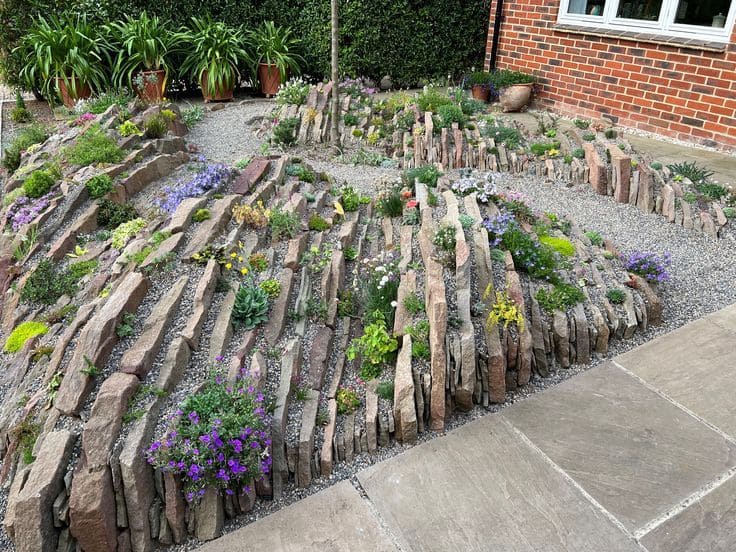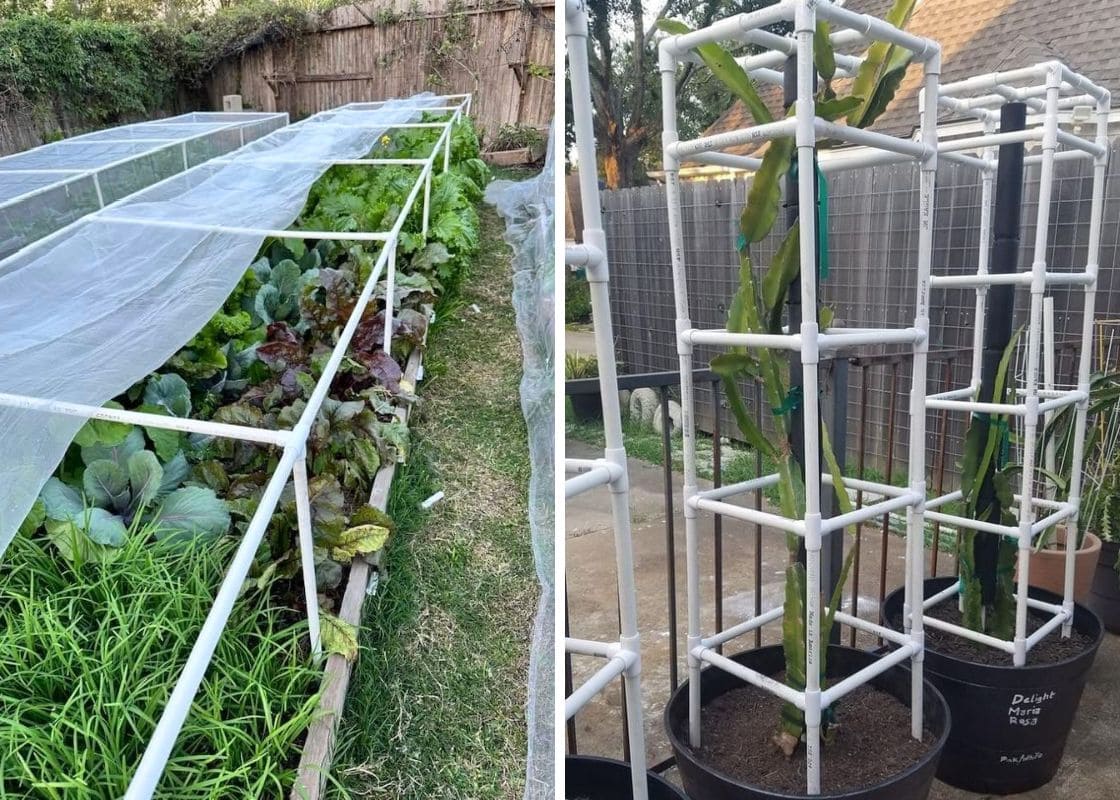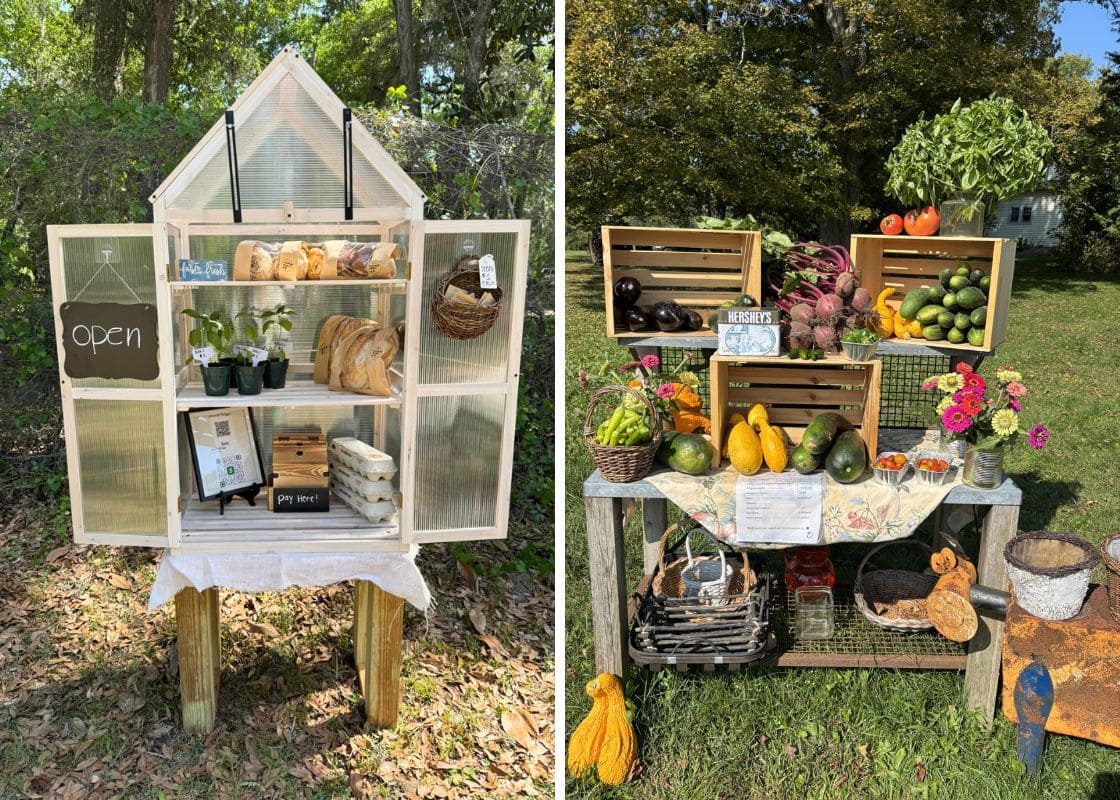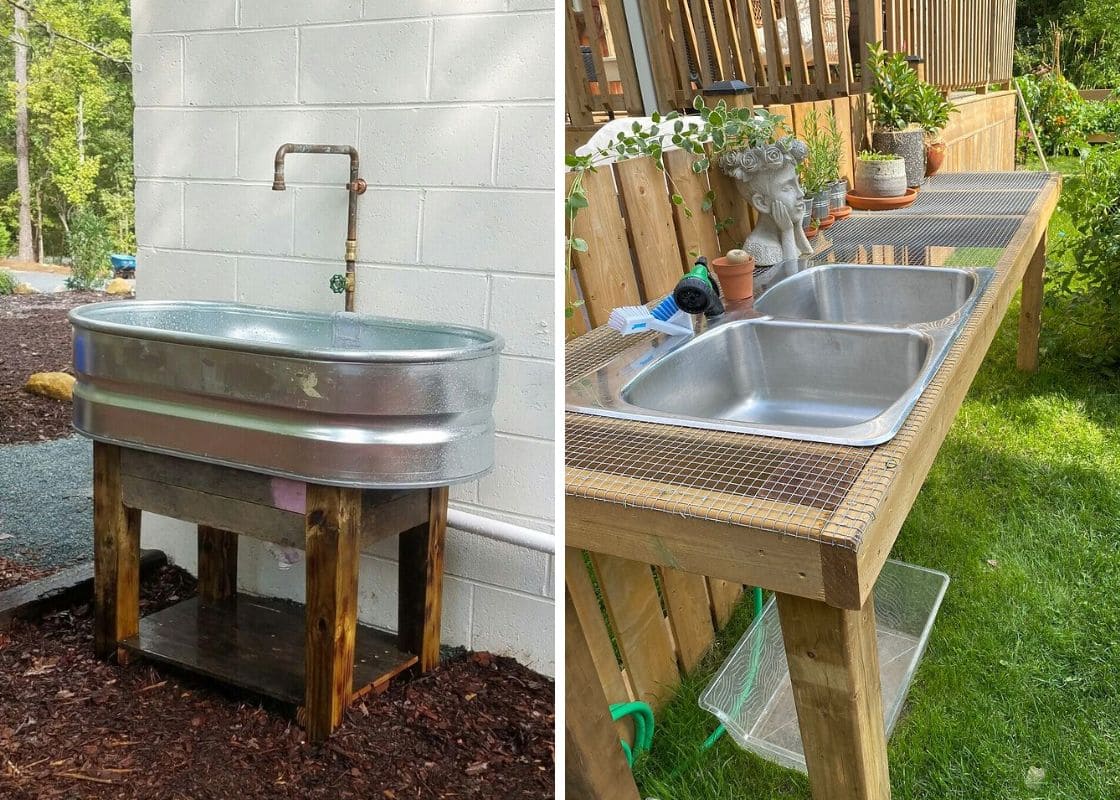A crevice garden feels like a piece of wild mountain terrain captured in your backyard. It’s where art, ecology, and patience come together, a landscape built from stone and life.
Instead of layering soil and mulch, this style uses upright rocks arranged closely together to form narrow gaps, known as crevices.
These spaces become the growing pockets where plants take root, forming miniature ecosystems that thrive with minimal care.
Why Crevice Gardens Are So Special

Unlike traditional rock gardens, crevice gardens don’t just decorate with stones, they rely on them.
The vertical placement of rocks mimics the fractures found in natural cliffs, creating unique microclimates.
Each crevice offers something slightly different: one may hold moisture longer, another might stay cool and shaded, while others drain fast and stay dry.
This variety allows gardeners to grow a wide range of plants in one compact area, from drought-tolerant succulents to alpine flowers that love rocky slopes.
Another beauty of this design is how it blends into its surroundings.
Over time, moss and small plants spill between stones, softening their edges until it looks as if the rocks have been there forever.
The Science Behind The Success of Crevice Gardens

The structure of a crevice garden is not only visually striking but also highly functional. The stones act as both insulation and anchors.
During the day, they absorb warmth from the sun, releasing it slowly at nightm, protecting roots from sudden temperature swings.
Meanwhile, the tight spacing of rocks helps conserve moisture below the surface while preventing the soil from becoming waterlogged.
Because of this balance, plants grow deeper roots and stronger structures.
Even in regions with dry summers or poor soil, a well-made crevice garden can support vibrant growth with very little watering.
Choosing the Right Plants
The best plants for crevice gardens are those that naturally thrive in rocky, well-drained environments. These include:
- Alpine species like Saxifraga, Campanula, and Dianthus.
- Succulents such as Sedum, Sempervivum, and Delosperma.
- Herbs like thyme, oregano, and creeping rosemary.
- Hardy perennials including creeping phlox and dwarf iris.
Many of these plants are small, resilient, and long-lived. They don’t just survive in tight cracks, they flourish there.
Building Your Own Crevice Garden
Begin by choosing a sunny, well-drained spot. Dig shallow trenches, then insert thin, flat stones vertically, about a third buried in the soil for stability.
Next, fill the gaps with a mix of coarse sand, gravel, and compost. This gritty blend prevents compaction and provides excellent drainage.

Once your rocks are set, tuck small plants or seedlings into the crevices, pressing them gently into the soil mix. You water them lightly until they settle in.
Within months, roots will weave through the spaces, anchoring plants securely while giving your garden that weathered, natural look.
Low Maintenance, High Reward
Crevice gardens are ideal for busy gardeners who still want something beautiful and sustainable.
They rarely need weeding, use little water, and can handle both heat and cold.
Plus, they attract pollinators like bees and butterflies that appreciate the abundance of blooms.
Over time, the rocks weather and the plants spread, turning what started as a neat arrangement into a breathtaking tapestry of texture and color.







